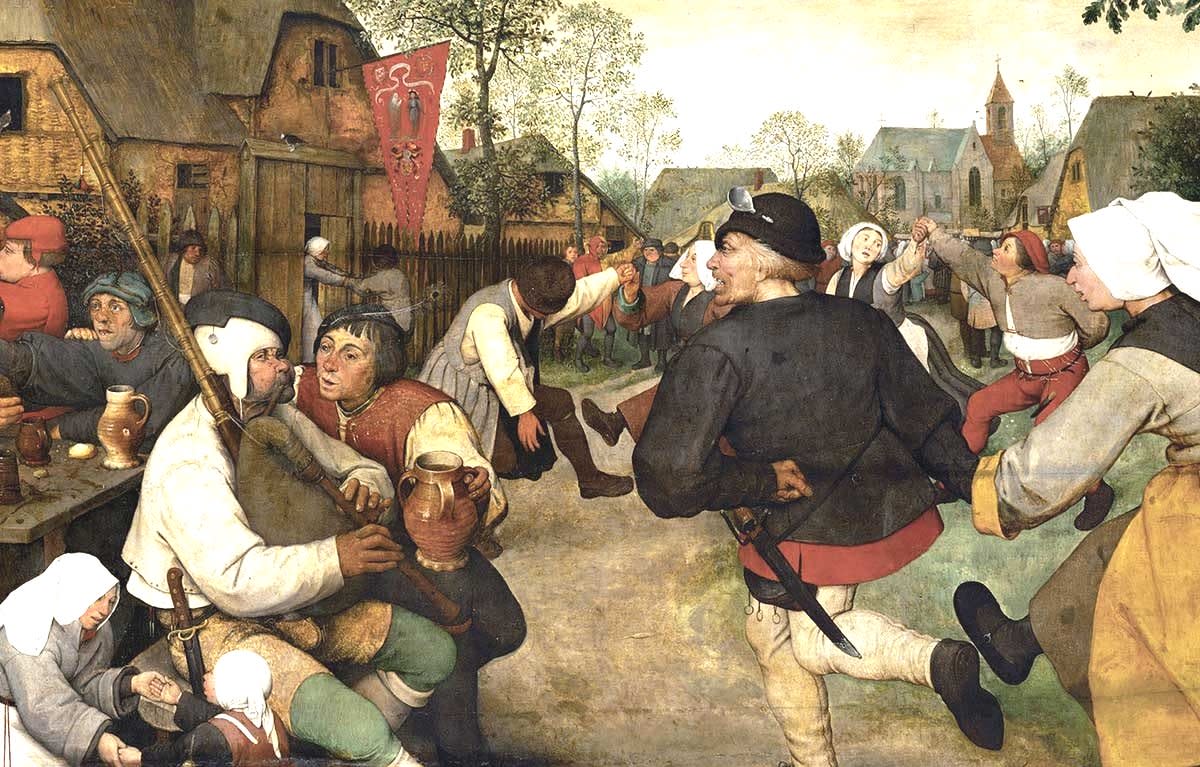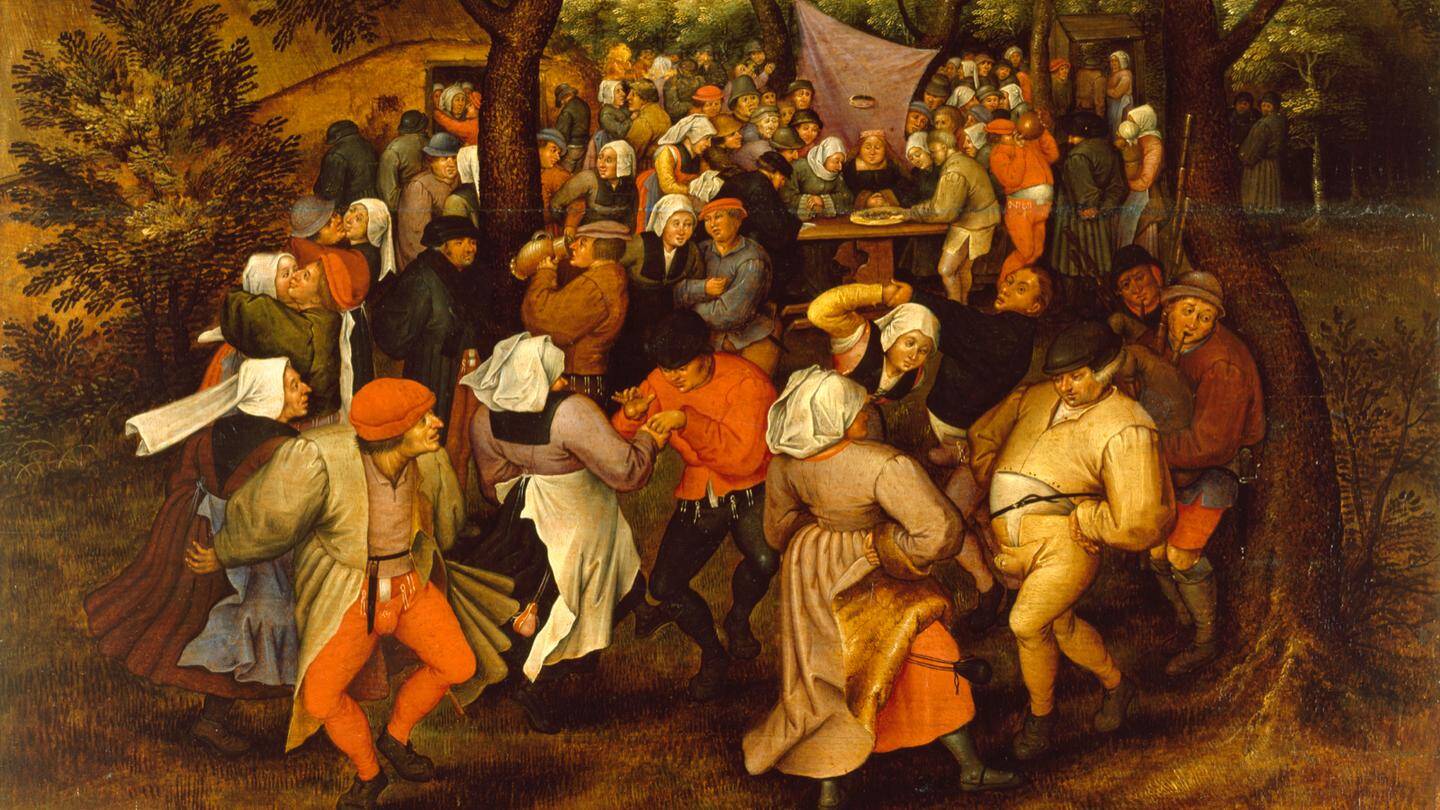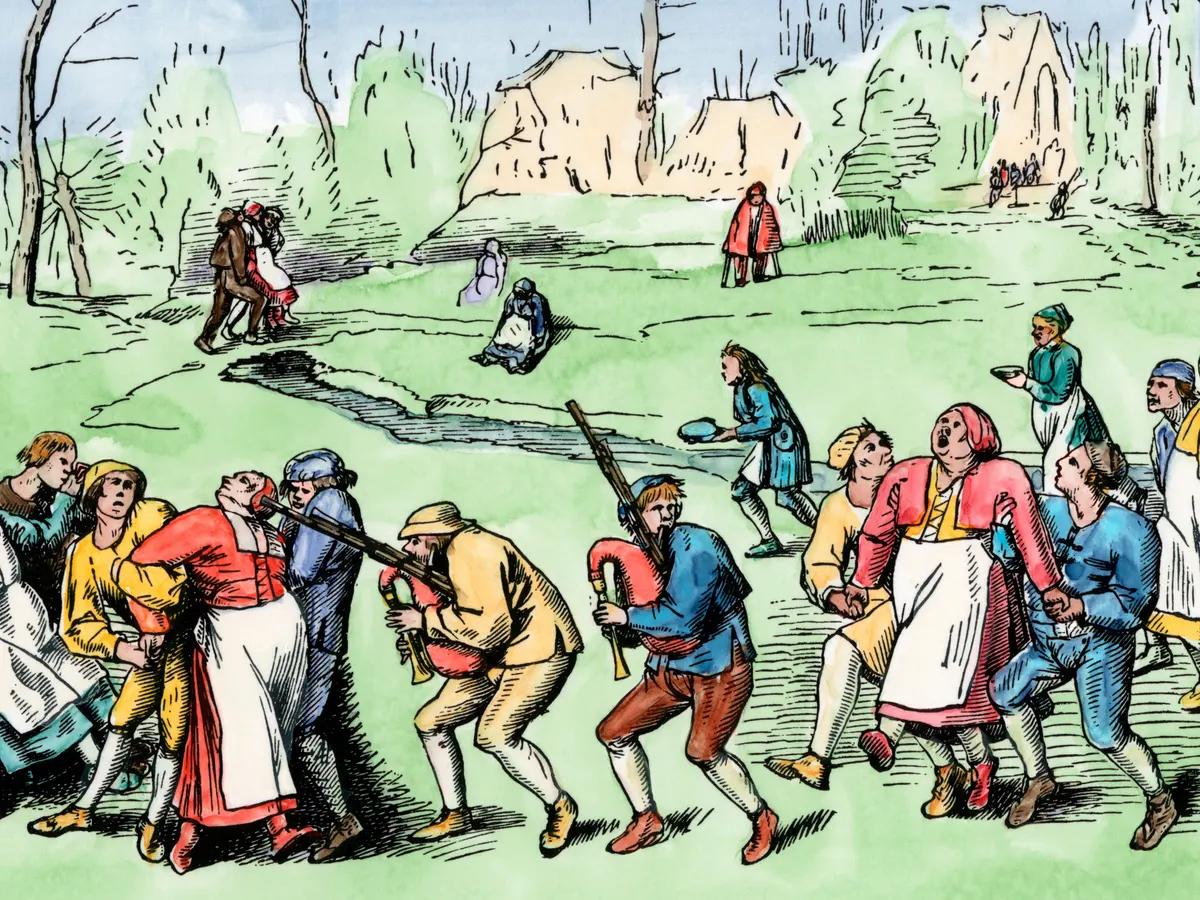The historical tapestry of humanity is woven with innumerable peculiar episodes, yet few can match the eccentricity of the Dancing Plague of 1518. This extraordinary event still intrigues and enchants researchers, historians, and casual onlookers alike. The phenomenon saw residents of Strasbourg, then part of the Holy Roman Empire, inexplicably overcome by an uncontrollable compulsion to dance. While the cause remains an enigma, the incident evokes a mélange of curiosity and humor, especially when viewed through the lens of modern interpretations, such as the whimsical imagery created by contemporary artist Niege Borges Alves. Here, we delve into the fantastical realm where historical oddities meet contemporary visuals, revealing the delightful and eccentric aspects of this bizarre episode.
Niege Borges Alves’ Whimsical Take on the Dancing Plague
Niege Borges Alves has breathed new life into an antiquated narrative. By capturing the essence of the Dancing Plague in a humorous and imaginative visual, Alves not only showcases artistic ingenuity but also enables the viewer to connect with an uncomfortable historical episode in an enjoyable manner. The caricature she provides juxtaposes the somber reality of the past with a playful aesthetic that invites laughter and reflection. Her art serves as a bridge, linking the weighty past with the lightness of today’s engagement with history.
Historical Context: A Prelude to the Plague

The bizarre outbreak began during a sweltering July in 1518. Residents of Strasbourg found themselves inexplicably compelled to dance for hours on end, some even succumbing to exhaustion, injury, or in some cases, death. Theories abound as to what could have incited this mass hysteria; some speculate ergot poisoning from contaminated grain, while others believe it was merely a manifestation of societal stress. Regardless, the outcome was undeniably colorful, with musicians hired to accompany the dancers, turning their plight into a spectacle that attracted curious onlookers. The macabre fusion of tragedy and amusement beckons one to ponder—what must it have been like to witness such an extraordinary event?
Modern Interpretations Through a Humorous Lens

Alves’ artistic renditions transform the grim historical narrative into something accessible and visually engaging. This fresh perspective fosters a liberating realization: people can approach even the most outlandish occurrences with humor. It’s a reminder that our struggles with inexplicable phenomena have remnants in our present-day lives. By interspersing elements of humor and whimsy through playful character designs, Alves invites viewers into an introspective journey, questioning how society reacts to collective stress and uncertainty.
Meme Culture and the Enduring Legacy of Humor

The phenomenon of the Dancing Plague continues to be reinterpreted and reimagined within popular culture, especially through memes and social media. The absurdity of large groups of people dancing uncontrollably serves as a rich source for humor, analogizing modern societal trends like viral challenges or dances. Alves’ depiction of the 1518 outbreak resonates well within this landscape, enabling contemporary audiences to draw parallels between past and present. These humorous visual interpretations act as a commentary on our modern-day predicaments while simultaneously honoring age-old narratives in a playful manner.
The Pathos of Uncontrollable Joy: Dancing as Expression

In studying the Dancing Plague, one cannot overlook the deeper psychological implications embedded within the narrative. Dance, as an expression, often serves as a conduit for unshackling emotion—joy, sorrow, euphoria, and despair. The involuntary nature of the dancers in 1518 evokes empathy and wonder, inviting us to question what forces—be they social, psychological, or physiological—can compel humanity to act in such fervor. Through the lens of Alves’ humor-infused art, spectators can also celebrate the absurdity of humanity, embodying the essence of letting go in an often chaotic world.
Engaging with History Through Laughter

Contemporary engagement with history thrives on creativity and humor. It allows for a reflective connection to the past that is both enriching and enjoyable. By viewing the Dancing Plague through humorous artwork, such as Alves’s depiction, we grasp not only the peculiarities of a historical moment but also embrace the capacity of laughter to serve as a means of coping with life’s absurdities. Such reflections can foster communal experiences that bind us together, allowing us to share in the laughter even when discussing subjects that might otherwise seem tragic or bereaved of joy.
Art as a Conversation Starter: The Role of Humor in Historical Reflection

Art knows no bounds, particularly when it comes to historical subjects. Just as the dancers of 1518 invoked community participation, so does Alves’ creative outlet encourage dialogue about how we perceive and respond to historical events. Art invites us to engage, reflect, and perhaps even reassess our own views on historical anecdotes. The humor infused in these stylistic representations incites discussions on how contemporary society copes with distressing realities, bridging gaps between generations while simultaneously speckling serious matters with levity.
In our exploration of the Dancing Plague of 1518, a tale steeped in mystery, tragedy, and laughter emerges. Thanks to the creative interpretations of artists like Niege Borges Alves, we can find solace in the eccentricity of human experience and the enduring legacy of art. As we continue to navigate the complexities of our existence, may we always cherish the peculiarity of our past, embrace humor, and dance along with the rhythms of life—even when those rhythms are incomprehensibly wild.




